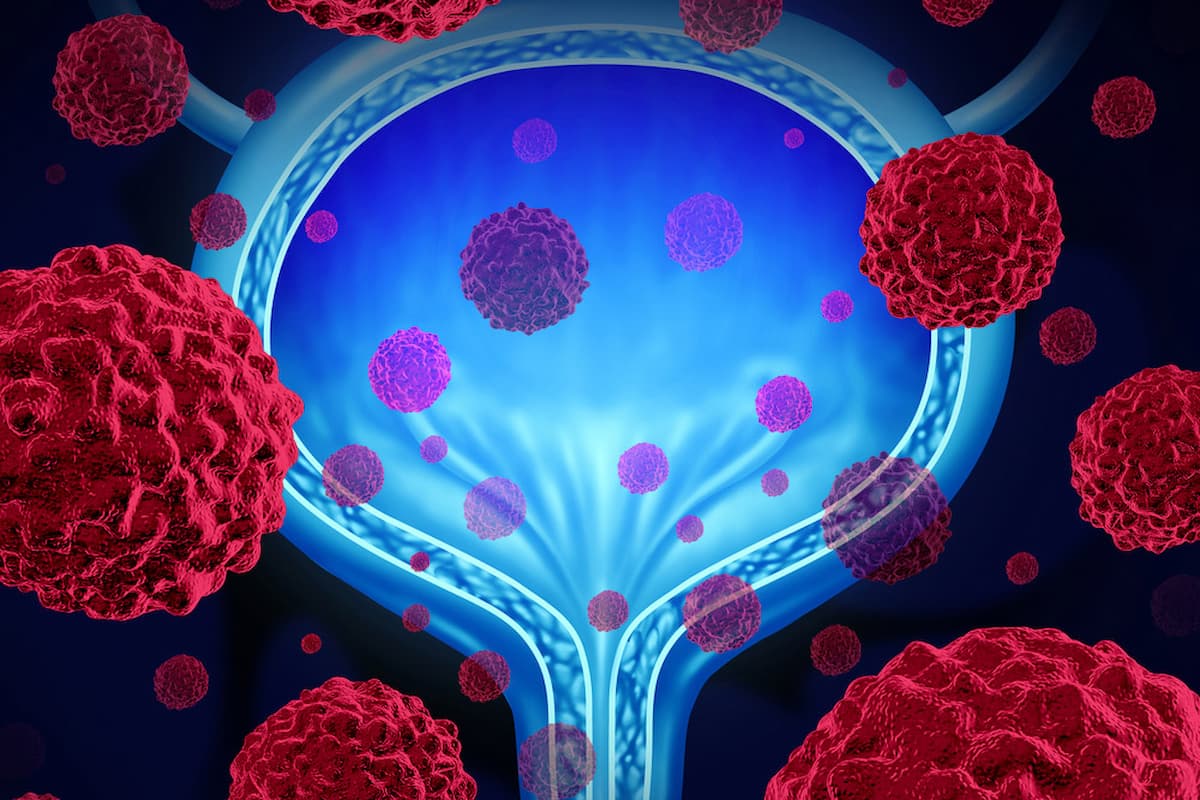FDA Grants Priority Review to Enfortumab Vedotin Combo in MIBC Subset
Enfortumab vedotin plus pembrolizumab before and after surgery improved EFS vs surgery alone in patients with MIBC in the phase 3 EV-303 trial.
Enfortumab vedotin plus pembrolizumab before and after surgery improved EFS vs surgery alone in patients with MIBC in the phase 3 EV-303 trial.

The FDA has accepted and granted priority review to a supplemental biologics license application (sBLA) for enfortumab vedotin-ejfv (Padcev) in combination with pembrolizumab (Keytruda) as neoadjuvant therapy and then continued as adjuvant therapy after radical cystectomy in patients with muscle-invasive bladder cancer (MIBC) who are ineligible for cisplatin-containing chemotherapy, according to a release from the developer, Astellas Pharma.1
The agency has established a Prescription Drug User Fee Act target action date of April 7, 2026.
The sBLA submission was based on results from the phase 3 EV-303/KEYNOTE-905 trial (NCT03924895), which evaluated the combination as neoadjuvant and adjuvant therapy compared with the current standard of care, surgery alone. Most recently, data from the trial were shared at the European Society for Medical Oncology Congress 2025 in Berlin, Germany.2,3
With a data cutoff date of June 6, 2025, the median event-free survival (EFS) in the experimental arm was not reached (NR; 95% CI, 37.3-NR) compared with 15.7 months (95% CI, 10.3-20.5) in the control arm, correlating with a 60% reduction in the risk of recurrence, progression, or death (HR, 0.40; 95% CI, 0.28-0.57; P < .0001); the 12- and 24-month EFS rates were 77.8% and 74.7% in the experimental arm and 55.1% and 39.4% in the control arm.
The median overall survival (OS) was NR (95% CI, NR-NR) in the experimental arm vs 41.7 months (95% CI, 31.8-NR) in the control arm (HR, 0.50; 95% CI, 0.33-0.74; P = .0002), correlating with a 50% reduction in the risk of death (HR, 0.50; 95% CI, 0.33-0.74; P = .0002). The 12- and 24-month OS rates were 86.3% and 79.7% in the experimental arm vs 75.7% and 63.1% in the control arm.
Across all predefined subgroups, EFS and OS benefits were consistently observed in the experimental arm.
The pathologic complete response (pCR) rate with the experimental therapy was 57.1% (95% CI, 49.3%-64.6%) compared with 8.6% (95% CI, 4.9%-13.8%) with the control therapy, with an estimated difference of 48.3% (95% CI, 39.5%-56.5%; P < .000001).
In a press release on the results from the trial, Christof Vulsteke, MD, PhD, head of Integrated Cancer Centre Ghent and Clinical Trial Unit Oncology Ghent in Belgium and EV-303 principal investigator, stated, “For decades, patients with [MIBC] who are ineligible for cisplatin treatment have [had] limited treatment options, often relying on surgery alone. The groundbreaking benefits seen in the KEYNOTE-905/EV-303 trial at this early interim analysis position the pembrolizumab and enfortumab vedotin combination to fundamentally change the way we approach the treatment of patients with this disease.”3
A total of 344 adult patients with MIBC were randomly assigned to receive either the experimental regimen (n = 170) or surgery alone (n = 174). In the experimental arm, patients received intravenous enfortumab vedotin at 1.25 mg/kg on day 1 and 8 every 3 weeks for 3 cycles plus intravenous pembrolizumab at 200 mg every 3 weeks for 3 cycles, then radical cystectomy and pelvic lymph node dissection (PLND), then 6 more cycles of enfortumab vedotin and 14 more cycles of pembrolizumab. In the control arm, patients received radical cystectomy plus PLND and then observation.
Eligible patients had clinical stage T2 to T4aN0M0 or T1 to T4aN1M0 disease by central assessment, at least 50% urothelial histology, cisplatin ineligibility per Galsky criteria or declined cisplatin, and an ECOG performance status from 0 to 2.
The primary end point of the trial was EFS by blinded independent committee review. Secondary end points included OS, pCR, and safety.
Any-grade treatment-emergent adverse events (TEAEs) occurred in 100% of the experimental arm and 64.8% of the control arm, with 67.8% and 64.8% occurring in only the surgery phase; grade 3 or higher TEAEs occurred in 71.3% and 45.9%, respectively, and serious TEAEs occurred in 58.1% and 40.9%.
The most common any-grade TEAEs in the experimental arm were pruritus (47.3%), alopecia (34.7%), diarrhea (34.1%), fatigue (32.3%), and anemia (30.5%); in the control arm, they were urinary tract infection (12.8%), anemia (11.9%), constipation (8.2%), and nausea (7.5%).
TEAEs led to dose reduction and interruption of enfortumab vedotin in 16.8% and 41.3%, respectively, and to discontinuation of pembrolizumab in 34.1%; TEAEs led to death in the experimental and control arms in 7.8% and 5.7%, respectively.
Currently, enfortumab vedotin is approved in combination with pembrolizumab in locally advanced or metastatic urothelial cancer.4
References
- PADCEV (enfortumab vedotin-ejfv) plus KEYTRUDA (pembrolizumab) sBLA granted FDA priority review for treatment of certain patients with muscle-invasive bladder cancer. News release. Astellas Pharma. October 21, 2025. Accessed October 22, 2025. https://tinyurl.com/5n969kx4
- Vulsteke C, Kaimakliotis HZ, Danchaivijitr P, et al. Perioperative enfortumab vedotin plus pembrolizumab in participants with muscle-invasive bladder cancer who are cisplatin-ineligible: phase 3 KEYNOTE-905 study. Abstract presented at: European Society for Medical Oncology Congress; October 17-21, 2025; Berlin, Germany. Abstract LBA2.
- PADCEV plus KEYTRUDA, given before and after surgery, cuts the risk of recurrence, progression or death by 60% and the risk of death by 50% for certain patients with bladder cancer. News release. Astellas Pharma, Pfizer. October 19, 2025. Accessed October 22, 2025. https://tinyurl.com/4232547n
- FDA approves enfortumab vedotin-ejfv with pembrolizumab for locally advanced or metastatic urothelial cancer. FDA. December 15, 2023. Accessed October 22, 2025. https://bit.ly/48ls9bi